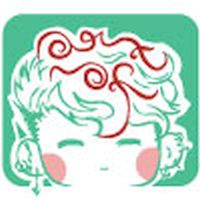Being a digital artist often involves sitting long hours at the desk, in front of screens with your pen in hand. On an extremely tight deadline, as a storyboard artist I could be sitting at the drawing board for 8-9 hours at a stretch, sometimes more.
This makes our job very sedentary. We already know that a sedentary lifestyle can be both physically and mentally taxing. This can affect our overall health and quality of life which in turn affects our creativity as well as productivity.
So what can you do about it? As with anything, the first step is to be aware and understand the signs, so that you can make adjustments to improve your health.
Common Artist Health Issues
Sleeplessness
Digital devices like computers tablets, phones are known to emit blue light from their screens. This is said to disrupt the body’s circadian rhythm making it hard to sleep, especially at night. Moreover if we’re not moving much during the day, our body doesn’t feel like it needs to rest and recharge at night, which can lead to sleep problems
Digital Fatigue
Digital fatigue is a state of mental exhaustion caused due to prolonged exposure to digital tools like apps and screens. Some common symptoms are lethargy (lack of energy), burnout (exhaustion), difficulty in concentration, frustration and irritability, muscle tension, headache, insomnia, etc.
Musculoskeletal pains
Sitting long hours at the desk in the same posture while drawing can often leave our body feeling stiff and sore. While focusing on our screens, we tend to be unaware of our posture and we often bend our necks down or forward too much. This uneven posture over long hours puts repetitive strain on our muscles and joints. If repetitive strain isn’t carefully managed, pain can just as easily become serious injuries, like carpal tunnel syndrome or tennis elbow.
Eye issues
While working on an artwork, we often forget to blink. This puts a great strain on the eyes which can lead to headaches, redness of the eyes, blurry vision, dry eyes and affect your eyesight in the long run. A 2018 study found that digital eye strain is prevalent in more than 50% of computer users.
Weight gain
When we are sedentary, we are not burning enough calories. Without adequate breaks, we are also more likely to grab a bag of chips or snacks and binge eat, instead of getting a nutritious meal in. This will obviously result in extra weight. If not addressed early on, this can turn into more serious lifestyle diseases like obesity, heart disease, high cholesterol or even diabetes.
How To Be a Healthy Artist
Whether you are pursuing art professionally or doing it for enjoyment, keeping your body healthy and happy is crucial to succeeding as a digital artist. Thankfully, there is a lot you can do to help your long hours at the drawing table stay productive and pain-free.
Setting up your workspace
Well before you put pen to pad, the most effective way to reduce strain is to think about your workspace. Everything from the desk where you create, to the chair you sit on and even the room you plan to work in plays a role in how you work.
1. Getting the right desk
While every artist has their own ways of doing things, everyone uses a desk of some sort when creating. Thinking about how your work setup fits the space plays an important role in choosing the right desk. If you use large monitors and a bigger tablet interface, you will probably need a larger desk of the standard 75 cm height. This allows you to place the monitors at a comfortable distance while fully supporting your elbows on the table. If you use a smaller tablet, you could opt for a smaller desk with an inclining feature, which allows you to angle your work area as you like.
You could also consider investing in a standing desk which studies have shown to improve the user’s focus, energy level, mood, and even health. Some of the perceived benefits are attributed to less discomfort (since prolonged sitting leads to back pain and rounded shoulders) and improved breathing.
2. Invest in a comfortable and ergonomic chair
While there is no-one-size-fits- all approach to selecting the ideal chair, the first thing you should think about is comfort. You will need a firm, supportive chair with back support and comfortable cushioning that will help you sit upright. Chairs with adjustable height can also help posture by allowing you to find the perfect comfortable working height for you.
3. Think about lighting
The lighting in your work space can have a considerable impact on your posture and general well-being. Natural lighting is a great option. Having a window that is either in front of you or by your side is perfect. It also helps when your eyes need a break from continuously focusing on your work. Adjust the lighting in your space to avoid any shadows or excessive glare on your creative surface. Shadows and glare can cause serious strain to your eye. They can also encourage you to adjust your posture or hand position in unhealthy ways to work around them.
4. Adjust your monitor’s brightness/contrast settings & colour temperature
Adjusting the brightness and contrast of your monitor can greatly impact your visual comfort and help reduce eye strain.Ideally, your screen’s brightness should match your surrounding workspace’s lighting. So if you’re sitting in a sunny room and your monitor appears gray or dull, it’s too dark—pump up the brightness. If you’re working in a dimly lit space, turn down the brightness. Contrast refers to the difference between the darkest black and brightest white on your screen. A setting around 50% is a good starting point, but again, adjust according to your preference and comfort.
You should also change color temperature to reduce blue light.You can adjust the color temperature on your monitor depending on the surrounding light. In dark rooms, use a warmer, yellowish color temperature, and in bright rooms, use a colder, bluer one.
Sit in the right posture
Now you have your space set up, you have the right desk and the perfect chair that matches your requirements for working long hours. But when you sit down, you are automatically hunched over. Your sitting posture is going to define if you are comfortable or adding strain to your body.
When you sit to work at your desk, take a few moments to adjust your posture. Begin by following these easy tips:
- Slide all the way back in your seat. Your lower back should be supported by the chair’s backrest.
- Rest both feet flat on the floor with your knees directly above your ankles.
- Raise your chair so that your hips are slightly higher than your knees.
- Elbows should be resting comfortably on the chair’s armrest at 90 degrees.
- Computer screen should be at eye height (neither looking down nor up).
Sitting this way may feel strange at first. With a little practice, you’ll find that sitting this way begins to feel more normal.
Take frequent breaks and remember to stretch
Try taking 5 to 10-minute breaks every hour or so to rest your eyes, stretch your legs and get your blood flowing. One way of doing this is to set up a timer for every 40-50 minutes that reminds you to step away from the screen. You could also use refilling your handy water bottle once or twice every hour as an excuse to take a break and stretch your back. This also makes sure that you are hydrating yourself well. As an added bonus, these breaks give you the chance to step out of the studio and reset your creativity when you need it.
Your eyes, hands and upper body muscles are the the most impacted by the sedentary work. When you take a break, do some eye exercises to avoid eye strain and also some flexibility and stretching exercises to keep your body from suffering the side effects of the long hours in seat.
Do not skip meals
Skipping meals deprives the body of essential nutrients, and energy needed for optimal brain function. The longer you go without eating a nutritious meal while working, the more likely you are to experience fatigue, lack of focus, and decreased cognitive abilities. This can lead to reduced creativity and productivity.
As creative people we often struggle to give our bodies the care they truly deserve. As many other jobs, creative work can be very taxing and take a major toll on our bodies. The drive to create often puts self care and prioritizing our bodies on the back burner.
To counter this, I would like to suggest a little mental trick or perspective shift if you will. In a business, machine maintenance is always top priority. Think of your bodies as a machine. It is a piece of equipment or a tool that you use to create your art. It is your most valuable tool, one that cannot be replaced, unlike every other tool in your studio. Your Body needs maintenance and time to recover.
So remember to rest. Take a break. Stretch. Disconnect from social media. Let your minds wander. Sleep. And then, go create more art 🙂





